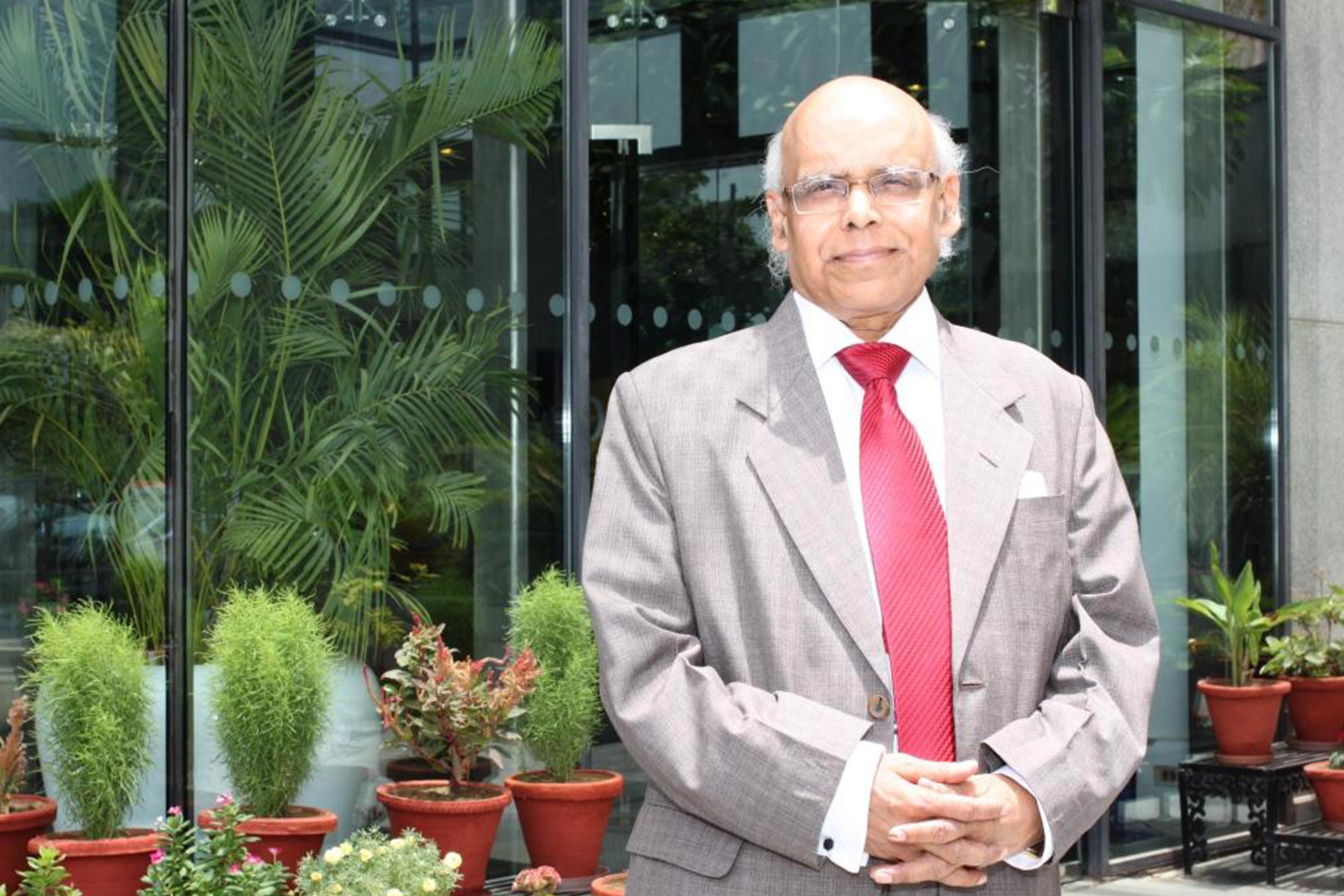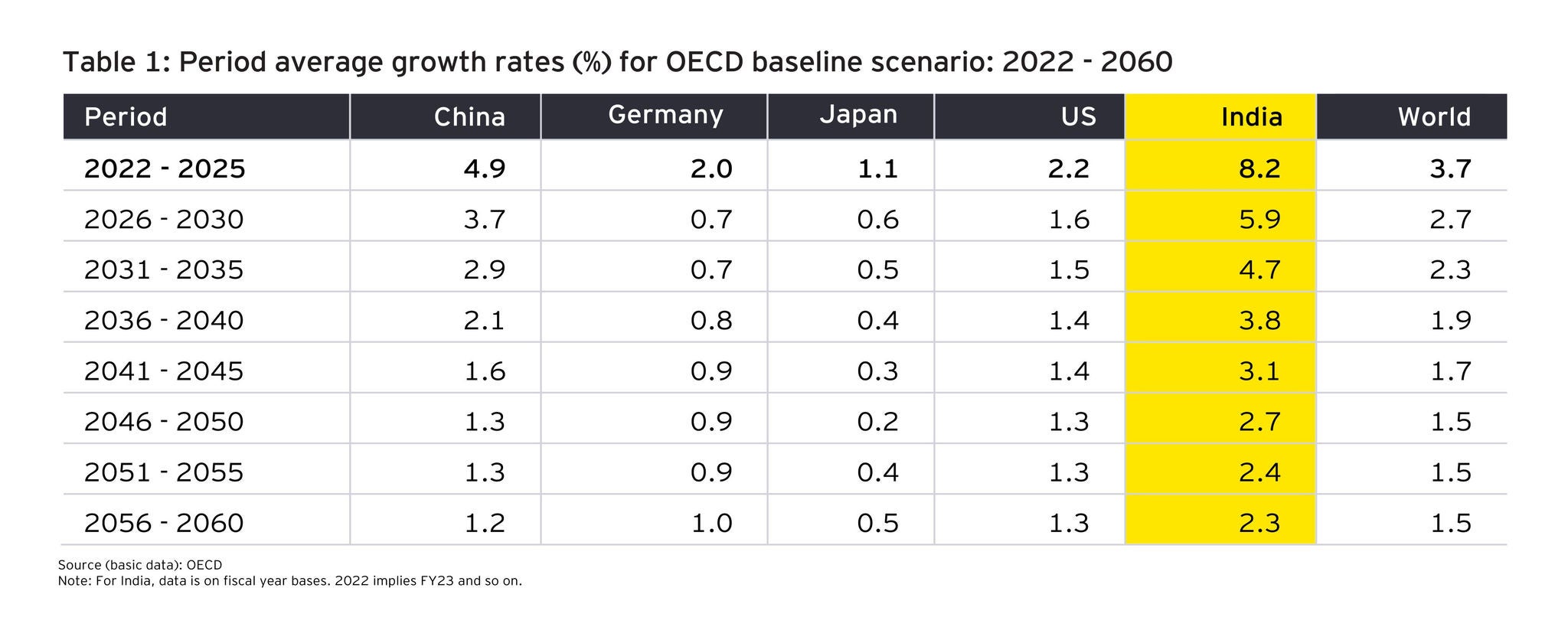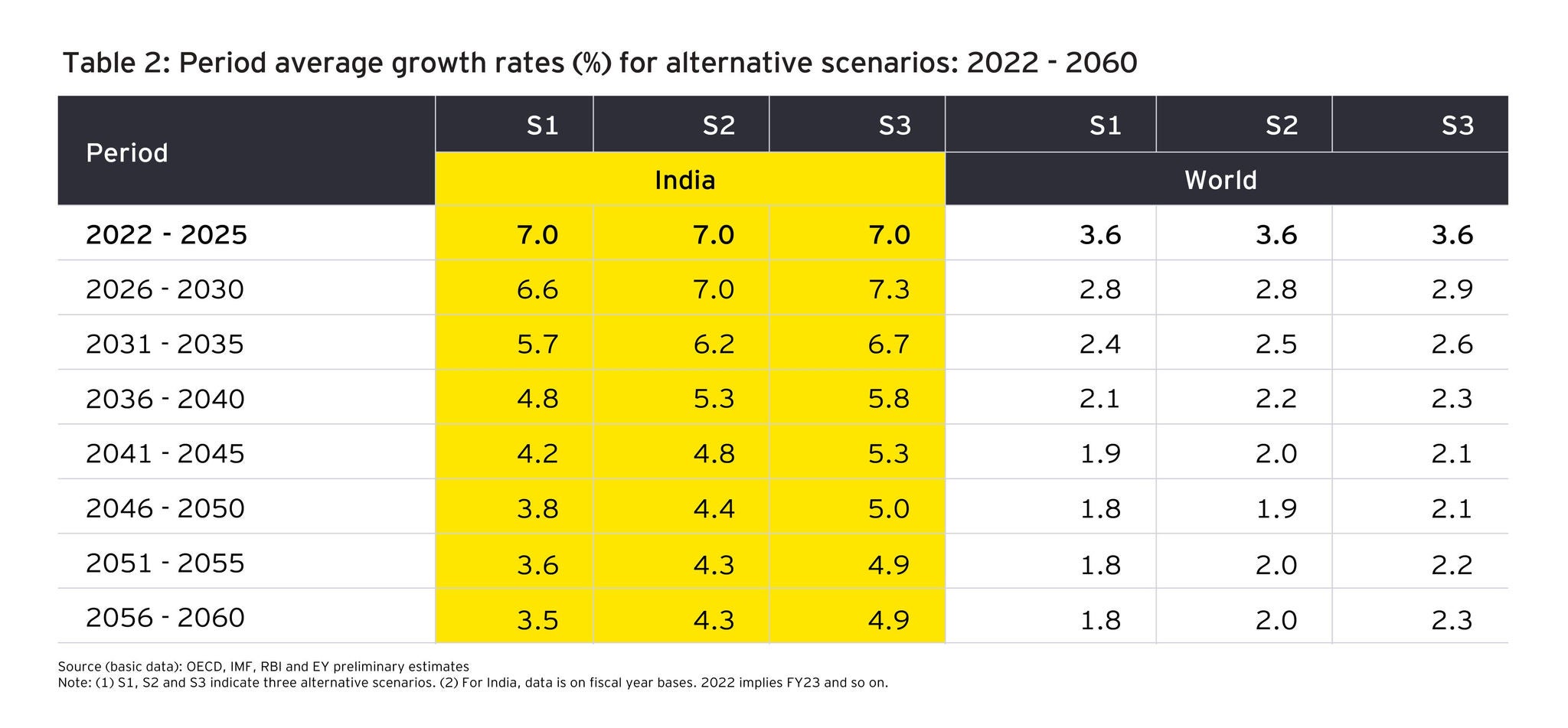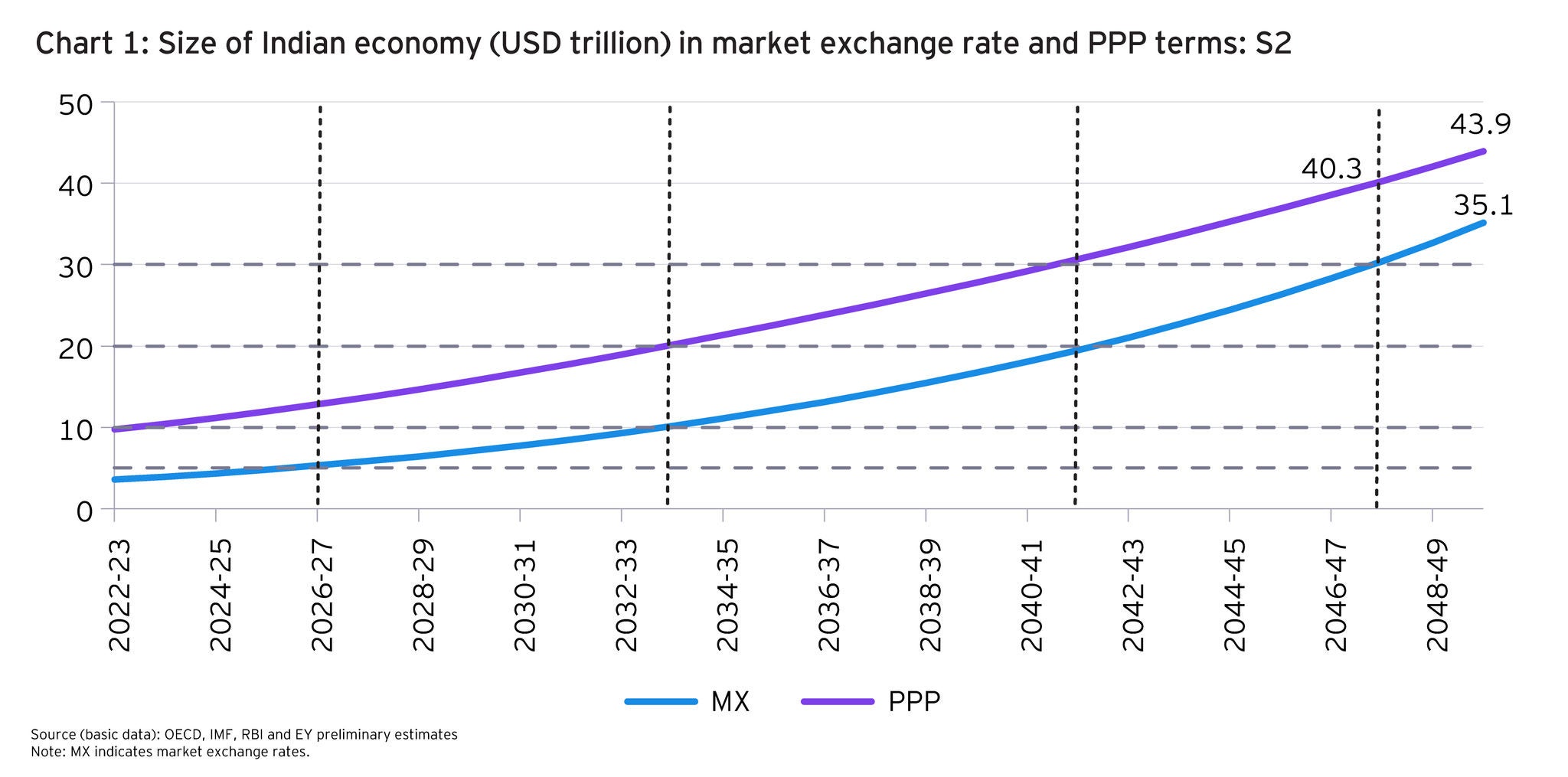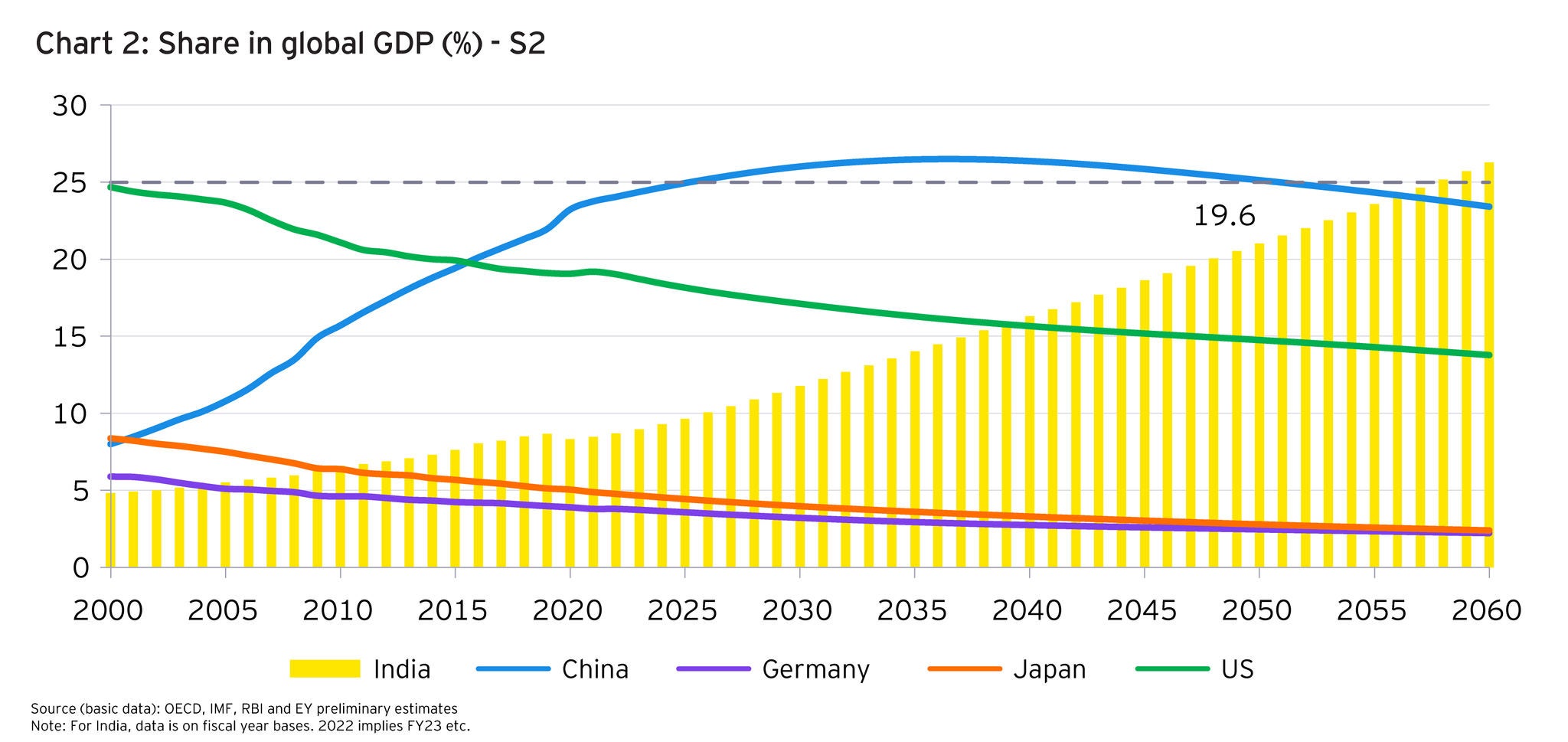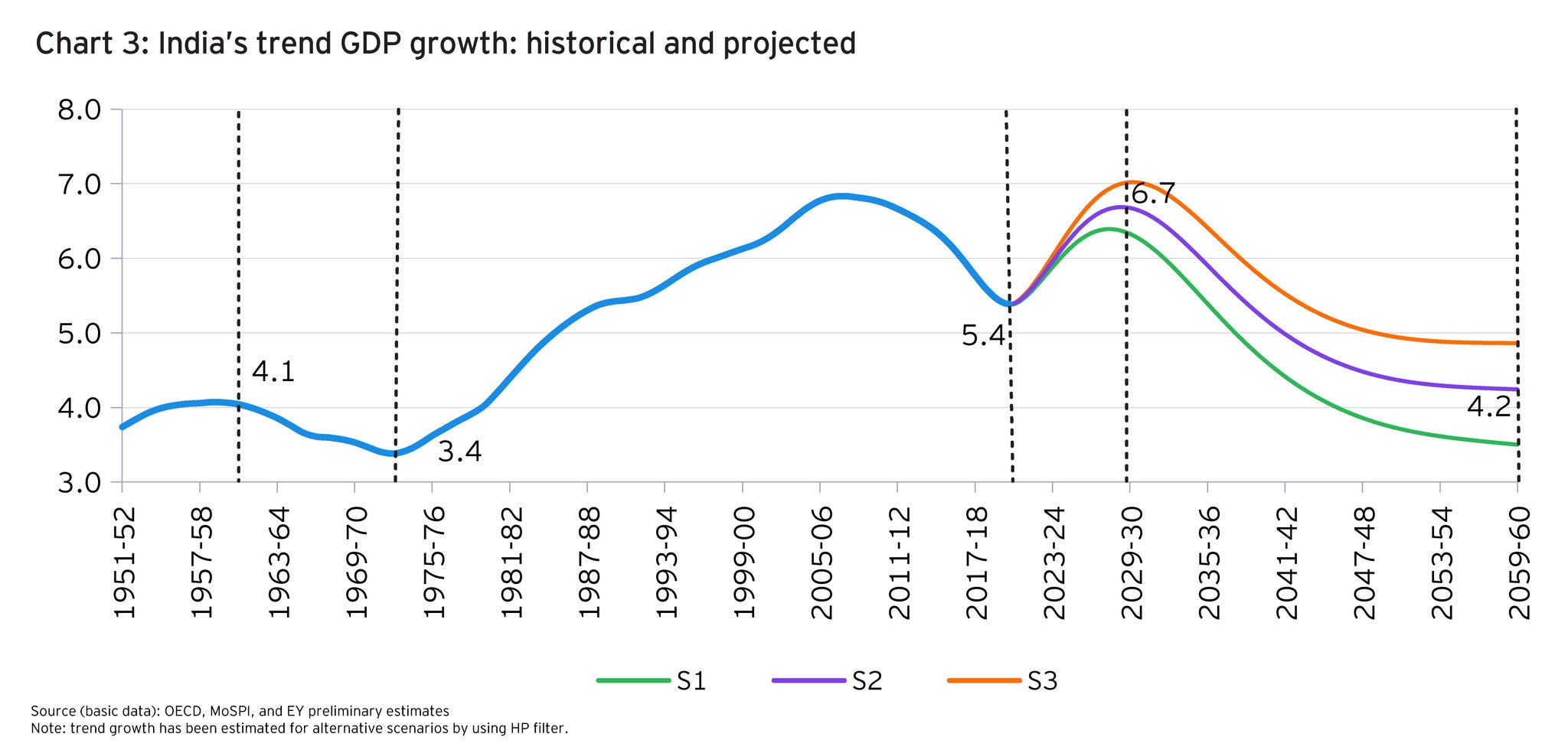EY refers to the global organization, and may refer to one or more, of the member firms of Ernst & Young Global Limited, each of which is a separate legal entity. Ernst & Young Global Limited, a UK company limited by guarantee, does not provide services to clients.
How EY can help
-
Tax policy advisory services by EY India offers insights & strategies to navigate complex tax regulations, driving business growth and compliance.
Read more -
Our BEPS team can help you navigate the OECD Multilateral Instrument (MLI) and understand what it means to your business and structure. Find out how.
Read more
Determining policy priorities
The following policy measures may be critical to sustain India’s growth:
- There is a need to increase the size of government expenditure relative to GDP for which augmenting the combined tax-GDP ratio is a pre-requisite. Further, there should be an increase in the share of combined expenditure on education to 6% of GDP and on health to 3% by the mid-2030s, rising subsequently to about 5%.
- Alongside, adherence to fiscal responsibility may facilitate higher emphasis on infrastructure investment. Further, the fiscal policy should also ensure a balance on the combined government revenue accounts and utilization of the entire capital receipts, including fiscal deficit for capital expenditure.
- Female workforce participation rate in India is still comparatively low. As per International Labour Organization (ILO) data, India’s female labor force participation rate has been declining in recent years. The ILO has estimated this rate to be as low as 18.6% in 2020. Emphasis on female education and health may help tangibly increase their participation in productive activities.
- Emphasis on better health provisions may enable an increase in the number of working years for India’s gradually rising old age population.
- Investment in education and technological skills would accelerate adoption of global technologies in India, thereby augmenting the contribution of technological progress to growth.
- A virtuous cycle of higher per capita income, lower dependency ratio, and higher female earnings in the family may facilitate higher savings and investment, and thereby growth.
- Overall, employment intensity of output needs to be increased. To some extent, this would be facilitated by the relatively higher growth of the services sector, which tends to be more employment intensive.




